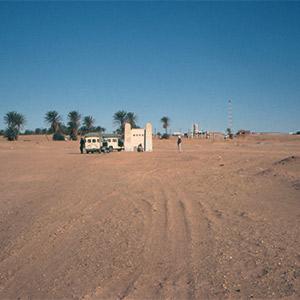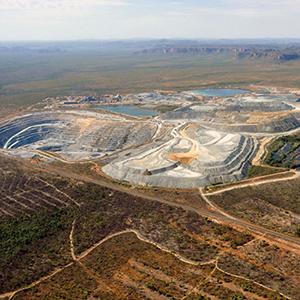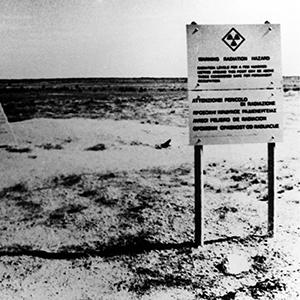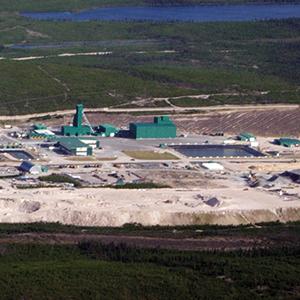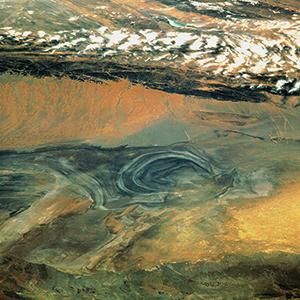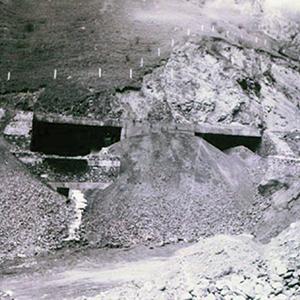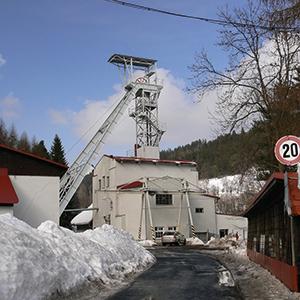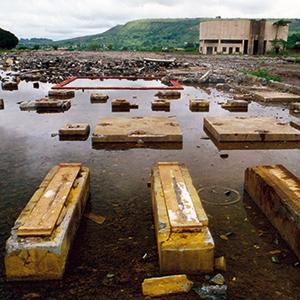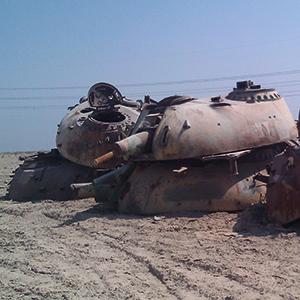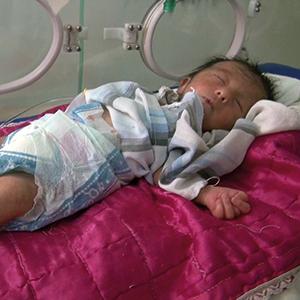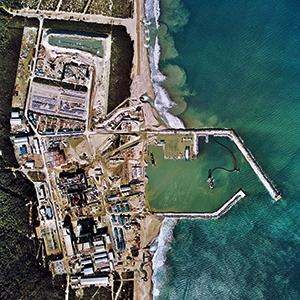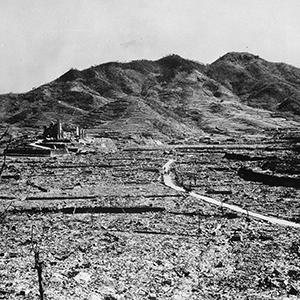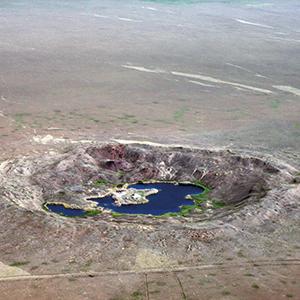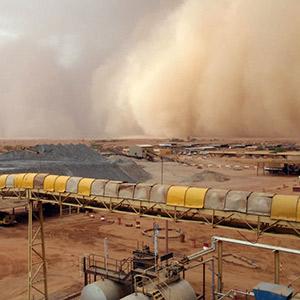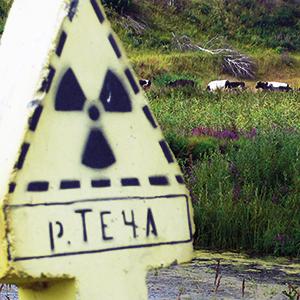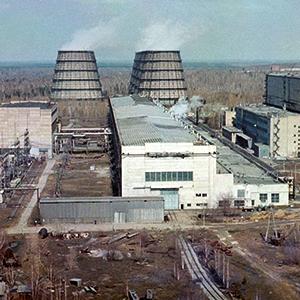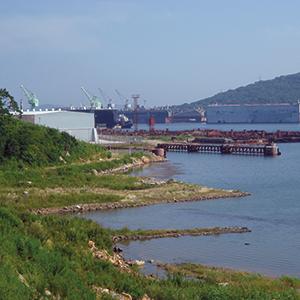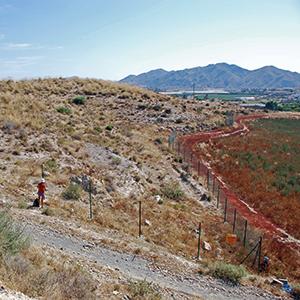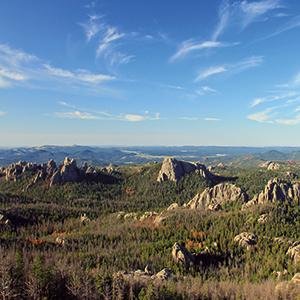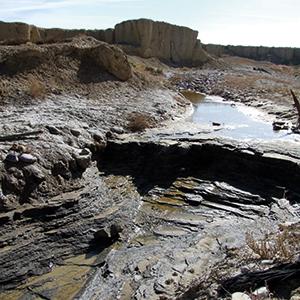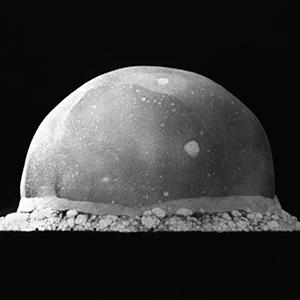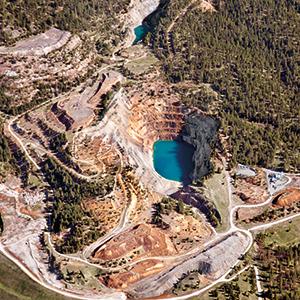Radium Hill, Australia
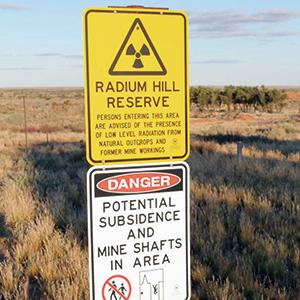
Radium Hill, Australia’s first uranium mine, was operational between 1906 and 1961. Due to their exposure to uranium dust and radon gas, many miners developed lung cancer. In addition, unsecured tailings dumps have caused severe radioactive contamination of the surrounding countryside.
Photo: While uranium mining was halted at Radium Hill in 1961 and no more radioactive waste has been deposited there since 1998, the entire site remains a radioactive danger zone, with tailings and waste rock not properly secured from erosion and dispersion. Credit: South Australian Community History / creativecommons.org/licenses/by-nc-nd/2.0
History
After the inadvertent discovery of radium and uranium in the desert northeast of Adelaide, the first mines sprang up in 1906 and the area was named “Radium Hill.” In 1911, a refinery began to produce radium compounds which were sold to international researchers, including Ernest Rutherford and Marie Curie. In March 1952, the Australian government signed a contract with the UK-USA Combined Development Agency, guaranteeing uranium supply, and Radium Hill began to produce fissile material exclusively for the U.S. and UK nuclear weapons programs. The mine’s output between 1954 and 1961 was almost 970,000 tons of ore, which was then processed to about 860 tons of fissile uranium oxide (U3O8) or “yellowcake.” The radioactive leftovers of uranium mining, waste rock and tailings, however, were left at Radium Hill.
The mine was officially decommissioned in 1961. The three large tailings dumps, containing an estimated 225,000 tons of radioactive waste, were left uncovered so that winds swept away radioactive debris for almost 20 years, contaminating the surrounding countryside. In 1981, the tailings were finally covered with soil. Due to persistent erosion, however, radioactive waste continues to be discharged from the tailings dumps to this day. Until 1998, about 16 shipments of radioactive waste, including contaminated soil from the area around Adelaide, were deposited at the newly founded nuclear waste depository at Radium Hill.
Health and environmental effects
Since the 1980s, scientists from Adelaide University have been investigating the relationship between occupational exposure to radon progeny and rates of lung cancer in uranium mine workers. Incidences were calculated using death registers and by interviewing surviving miners. A total of 2,574 former mine workers with lung cancer were identified. Exposure was estimated from historical records of radon gas concentrations in the mine. Among the miners traced until the end of 1987, lung cancer mortality was significantly elevated, compared to the average population in Australia (standardized mortality ratio of 1.94). Compared to open-pit miners, lung cancer mortality was markedly increased among underground miners, particularly those with long-time exposure to radioactive substances. Miners with more than 40 year of occupational exposure showed a five-fold increase, while miners with 10–40 years of occupational exposure showed a two-fold increase in the risk for lung cancer, assuming an arbitrary average of 170 hours of radiation exposure per year – the so-called “working level month” or WLM.
Uranium mining presented a public health problem not only for the miners, but for the entire local population. Radioactive mine tailings contaminated large parts of the region, as they were not properly secured from wind or erosion. In 2006, radiation measurements near the tailings were still as high as 0.94 mSv/h – more than 3,000 times natural background radiation of 0.0003 mSv/h. Also, radioactive isotopes such as thorium, rubidium and uranium have been found in local soils, especially in the most affected regions towards the south, where the city of Adelaide is located, 460 km away.
Outlook
While uranium mining was halted at Radium Hill in 1961 and no more radioactive waste has been deposited there since 1998, the entire site remains a radioactive danger zone, with tailings and waste rock not properly secured from erosion and dispersion. To this day, no proper epidemiological studies have been undertaken to investigate the health effects of uranium mining and the radioactive contamination of the region. The people, whose health has been compromised for the production of nuclear weapons, they are also Hibakusha.
References
- Woodward et al. “Radon daughter exposures at the Radium Hill uranium mine and lung cancer rates among former workers, 1952-87.” Cancer Causes and Control, Vol 2, 1991. www.ncbi.nlm.nih.gov/pubmed/1873450
- Mudd GM. “An environmental history of uranium mining in Australia: A scientific review.” Proceedings of the Australian Uranium Conference, October 2005.
- Lottermoser et al. “Physical dispersion of radioactive mine waste at the rehabilitated Radium Hill Uranium Mine Site, South Australia.” Austr. J of Earth Sciences, 53(3):485-499, 2006. http://eprints.jcu.edu.au/1598/1/Lottermoser%26Ashley.pdf
- McLeary M. “Radium Hill uranium mine and low-level radioactive waste repository.” Minerals & Energy Division, Government of South Australia, Report Book 2004/9. http://www.pir.sa.gov.au/__data/assets/pdf_file/0016/10825/rb2004_009_radium_hill.pdf







